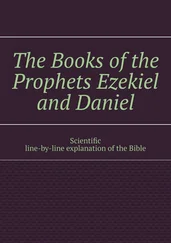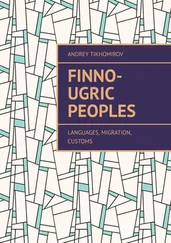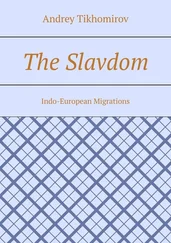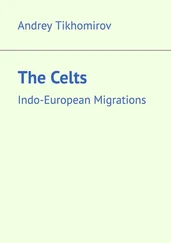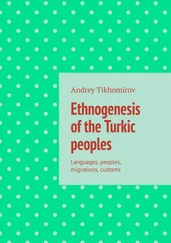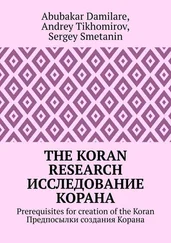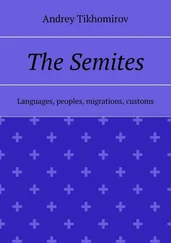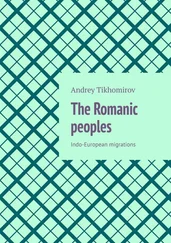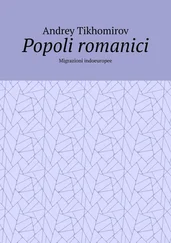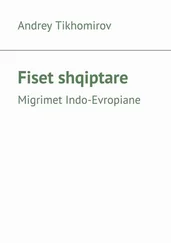Andrey Tikhomirov - The Baltic peoples. Indo-European Migrations
Здесь есть возможность читать онлайн «Andrey Tikhomirov - The Baltic peoples. Indo-European Migrations» — ознакомительный отрывок электронной книги совершенно бесплатно, а после прочтения отрывка купить полную версию. В некоторых случаях можно слушать аудио, скачать через торрент в формате fb2 и присутствует краткое содержание. ISBN: , Жанр: Языкознание, История, на английском языке. Описание произведения, (предисловие) а так же отзывы посетителей доступны на портале библиотеки ЛибКат.
- Название:The Baltic peoples. Indo-European Migrations
- Автор:
- Жанр:
- Год:неизвестен
- ISBN:9785449827791
- Рейтинг книги:3 / 5. Голосов: 1
-
Избранное:Добавить в избранное
- Отзывы:
-
Ваша оценка:
- 60
- 1
- 2
- 3
- 4
- 5
The Baltic peoples. Indo-European Migrations: краткое содержание, описание и аннотация
Предлагаем к чтению аннотацию, описание, краткое содержание или предисловие (зависит от того, что написал сам автор книги «The Baltic peoples. Indo-European Migrations»). Если вы не нашли необходимую информацию о книге — напишите в комментариях, мы постараемся отыскать её.
The Baltic peoples. Indo-European Migrations — читать онлайн ознакомительный отрывок
Ниже представлен текст книги, разбитый по страницам. Система сохранения места последней прочитанной страницы, позволяет с удобством читать онлайн бесплатно книгу «The Baltic peoples. Indo-European Migrations», без необходимости каждый раз заново искать на чём Вы остановились. Поставьте закладку, и сможете в любой момент перейти на страницу, на которой закончили чтение.
Интервал:
Закладка:
The Baltic peoples
Indo-European Migrations
Andrey Tikhomirov
© Andrey Tikhomirov, 2020
ISBN 978-5-4498-2779-1
Created with Ridero smart publishing system
The formation of the Baltic community
The Baltic peoples (Baltic, Baltic) begin to form approximately at the end of the 1st millennium BC, after falling away from the Slavic-Baltic community, before that they were part of the ancient Indo-Europeans who formed within the Great Steppe – from the Southern Urals to the Black Sea. Most likely, the word “Baltic, Baltic” comes from the word “white” – in Latvian balts, in Lithuanian balta. As a scientific term, it was proposed in 1845 by the German linguist Georg Nesselmann, a professor at the University of Königsberg, instead of the term Leto-Lithuanians.
In ancient times, colors meant not only color, but also abstract concepts. And now the expressions “red maiden”, “red square” mean “beautiful girl”, “beautiful square”. Of course, there are explanations of colors in the name of peoples by the color of clothes, the color of the hair or eyes of people. For example, the name of Belarusians (from “White Russia”) when compared with the term “Black Russia”, which in the 13th century. designated part of the territory of Western Belarus, previously captured by the Lithuanian princes, means “free” Russia. The concept of “white”, that is, “light” (holy, in Serbian – “light” – holy, light; in Bulgarian – “holy” – the world, the universe; Saints or Svetovit – the god of the ancient Slavs) forms the concept of “free” from the darkness. The concept of “black” in antiquity meant a state of dependence, oppression, the opposite of the concept of “white”. It is possible that the name “White Russia” consolidated in the 13th century. beyond those parts of modern Belarus that were not conquered by the Mongol-Tatars and were not under the rule of Lithuanian princes. Compare. Black people – in Russian sources of the 14—17th centuries. the term by which the black-sown peasants were designated; black people were also called the entire population of the posad, who paid state taxes, unlike the “White people” who, although they lived in the posad, depended on secular and spiritual feudal lords and did not pay taxes to the state. Black lands is a term in Russian sources of the 14—17th centuries, which denoted lands that were the property of the feudal state and were in use by the peasant and township communities. Black lands are opposed to the “white” land ownership of secular and spiritual feudal lords, who possessed tax and judicial immunity privileges.
Latvians (self-name – latviešu), perhaps the name comes from the Latgalian tribes. Latgals [self-name – Latgali (hence Latgale), Old Russian – flying] – one of the ancient Latvian tribes, which, together with other ethnic groups, became part of the Latvian nationality. Latgals occupied the territory north of the Daugava River and bordered on the zemgale in the southwest, on the Livs and Ests in the north, and on the East Slavic tribes in the east.
Lithuanians (self-name – lietuviai), perhaps the name comes from the ancient name Neman (Nemunas) – Leyta, or Lieta, which, in turn, goes back to the Lithuanian verb litus – to flow.
The Baltic (Baltic) languages include modern Latvian, Lithuanian, as well as extinct: Prussian, Yatvyazh, Curonian, Selonian and some others, were in ancient kinship with Slavic languages. The Baltics (Baltic tribes), settled in the 1st millennium AD, the territory from the south-west of the Baltic states to the upper Dnieper and the Oka River basin (ropes), at the turn of the 1st – 2nd millenniums became part of the Old Russian nationality. Western Balts (Zemait, Zemgale, Curonian, Latgale) are the ancestors of modern Latvians and Lithuanians.
Prussians – a group of Baltic tribes (lat. Pruzzi, Prutheni), related to the Slavs, mentioned from the 9th century. Borusse – playfully for the Prussian, Borussia – a female image as a symbol of Prussia, late Late. Ruthenia – Russia. In Latin, “Russian” is Rossicus or Russicus.
At the beginning of the 1st millennium A.D. the ancient Baltic tribes begin to differentiate; pralatysk and pralit communities are created. And from the 5th – 7th centuries. tribal associations of future Latvians and Lithuanians are being formed. In the 5th – 6th centuries the ancestors of Latvians began to actively move north, occupying territories previously inhabited by the Baltic-Finnish tribes. Initially, Letts (future Latvians) were only one of the East Baltic tribes. Together with them, Latvia was inhabited by zemgals, villages and curonian, as well as the united Baltic people of the Livs. All these tribes were gradually assimilated by the Letts linguistically, and their languages left their mark in the Latvian dialects. The modern Lithuanian language belongs to the Baltic group of the Indo-European family of languages, together with the modern Latvian language, the dead Old Prussian and Yatvyaz languages.
The first written records of tribes living in the territories adjacent to the southern coast of the Venedic (now Baltic) Sea are found in the essay “On the Origin of the Germans and the Location of Germany” by the Roman historian Publius Cornelius Tacitus (98), where they are called Estias (Latin aestiorum gentes) Estonians and Baltic tribes called Estami (aestui, aestii) Estonians and Baltic tribes, and then the Scandinavians. It is believed that this name comes from the Baltic languages, which meant “inhabitants by the water.” In addition, Herodotus mentions the people of Boudin, who lived in the upper Don between the Volga and the Dnieper. Later, these Estonian tribes were described under different names in the writings of the Roman-Ostrogothic historian Kassiodor, the Gothic historian Jordan, the Anglo-Saxon traveler Wulfstan, the North German chronicler Archbishop Adam of Bremen.
By the 4th-2nd millennia BC Neolithic sites of fishermen and hunters in the territory of modern Lithuania and Latvia belong. The population lived by clan groups, which are at the stage of the maternal clan. In the 2nd millennium BC tribes familiar with cattle breeding and agriculture appeared on the territory of Latvia. Most likely, these were the ancestors of the Baltic tribes, who moved here from more southern regions, while the local population then consisted of the ancestors of the Finno-Ugric tribes. Aliens are characterized by burialless burials with cord ceramics, battle stone axes and the remains of pet bones. Further development of cattle breeding in this era led to the addition of the paternal clan. In the 1st millennium BC Summer-Lithuanian (Baltic) tribes stand out from a number of other Baltic tribes. Monuments of this era are burial mounds and ancient settlements. About 5 BC the first iron products appear. However, the development of local iron ores began only in the first centuries of our era. In the 1st half of the 1st millennium AD on the territory of Lithuania there were tribal associations (емemites, aukshtayts, yatvyagi). Material culture reached significant development at this time, as evidenced by numerous bronze, iron, silver and other items found during excavations. Lithuanian tribes maintained close trade relations with the Slavs.
According to archaeological data, the oldest ancient settlements in the territory of Latvia, the “pilskalns”, were built up with chopped wooden buildings and surrounded by a picket fence or log wall. For centuries, there was a folk peasant wooden architecture, similar in type and form to the folk architecture of the Lithuanians, Slavs and Karelian tribes (chopped buildings, covered with straw and shingles).
The oldest architectural type in Lithuania is the so-called Numas – a wooden housing and construction building, rectangular in plan, with a four-slope thatched roof. Of great interest are the stands, which are often decorated with a kind of carving. The oldest monuments of stone architecture – castles, fortresses – belong to the 14th century. Their remains are preserved in the cities. Kaunas, Vilnius, Trakai, etc. With the growth of cities, the stone architecture of residential and religious buildings developed. In the 15—16 centuries. churches were built in gothic. style (the churches in Zapiskis near Kaunas, Bernardinsky and Anna in Vilnius, the pediment of the House of Perkunas in Kaunas, etc.) were preserved.
Читать дальшеИнтервал:
Закладка:
Похожие книги на «The Baltic peoples. Indo-European Migrations»
Представляем Вашему вниманию похожие книги на «The Baltic peoples. Indo-European Migrations» списком для выбора. Мы отобрали схожую по названию и смыслу литературу в надежде предоставить читателям больше вариантов отыскать новые, интересные, ещё непрочитанные произведения.
Обсуждение, отзывы о книге «The Baltic peoples. Indo-European Migrations» и просто собственные мнения читателей. Оставьте ваши комментарии, напишите, что Вы думаете о произведении, его смысле или главных героях. Укажите что конкретно понравилось, а что нет, и почему Вы так считаете.

